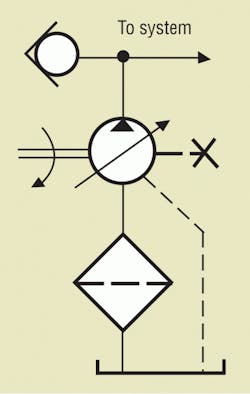The Old Timer of Royal Oak, Mich., was a regular contributor to H&P years before we ever even heard of the internet. But most of his advice is just as ueful — and interesting — today.
So rather than leave his wisdom printed on pages archived in our storage room, I pulled out issues from the late 1980s and early 1990s and reproduce relevant entries in this blog. Here is my fourth entry, which was originally published in the August 1987 issue:
Maintenance tip: don’t forget square one
In our plant, a pressure-compensated pump from a reputable manufacturer ran hot from the day it was first started—eventually raising the reservoir temperature and tripping a safety switch. The machine involved also seemed sluggish.
Someone decided to rebuild the pump, but bearings, rings, vanes, plates, and such all checked out OK and the pump still ran hot. The next step was to replace it and when the new pump didn’t solve the problem and the shaft seal flew, we had to go back to square on.
With only four pump connections—inlet, outlet, gauge, and drain—what could be wrong? In fact, there wasn’t even a gauge in the gauge port. It had been plugged because we used downstream gauge ports with quick-connect couplings in our plant. Let’s take a look anyhow.
And there it was. The set-up man had interchanged the case drain and the gauge port. He plugged the case drain and the pump had been pushing about 3-gpm through the gauge port to tank whenever it ran. Because this port was part of the governor, it caused the pump to be sluggish on recovery. That one little line didn’t stop the system but it sure caused some headaches.
To try to avoid this type of situation on other machines, we began to make copies of all instruction and service sheets for each machine and send them in protective plastic folders to the departments where hydraulic equipment to located. We believe the time spent doing this saved many maintenance hours on the production floor later on.
About the Author
Alan Hitchcox Blog
Editor in Chief
Alan joined Hydraulics & Pneumatics in 1987 with experience as a technical magazine editor and in industrial sales. He graduated with a BS in engineering technology from Franklin University and has also worked as a mechanic and service coordinator. He has taken technical courses in fluid power and electronic and digital control at the Milwaukee School of Engineering and the University of Wisconsin and has served on numerous industry committees.

Leaders relevant to this article:

